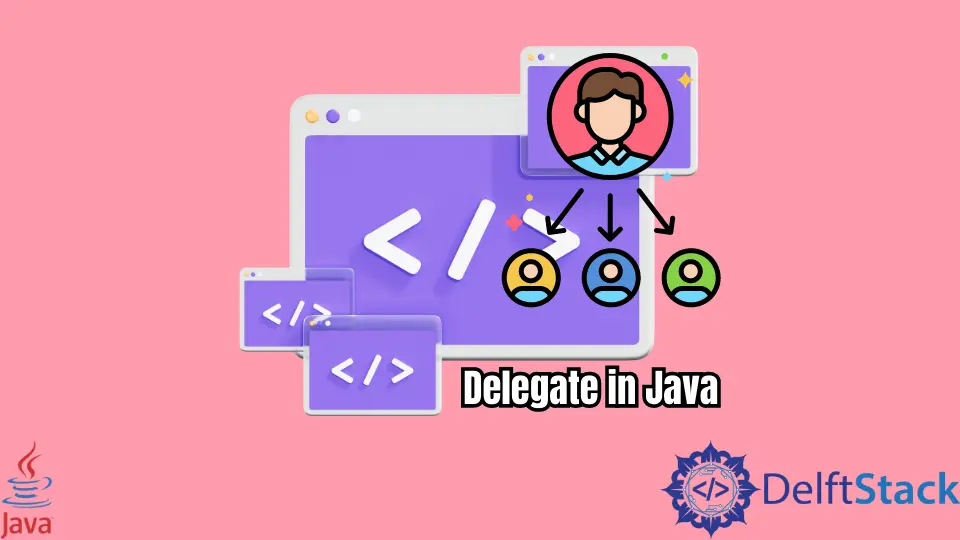How to Delegate in Java
- Understanding Delegation in Java
- Benefits of Using Delegation
- Best Practices for Delegation in Java
- Conclusion
- FAQ

In the world of programming, understanding delegation is crucial, especially when working with Java. Delegation is a design pattern that allows an object to hand off a task to another helper object. This can lead to cleaner, more maintainable code and better separation of concerns.
In this tutorial, we will explore the concept of delegation in Java, how it works, and why it is beneficial for your projects. Whether you’re a beginner looking to grasp the basics or an experienced developer seeking to refine your skills, this guide will provide you with valuable insights into effective delegation practices in Java. Let’s dive in!
Understanding Delegation in Java
Delegation is a fundamental concept in object-oriented programming that enhances code reusability and flexibility. In Java, it allows one class to delegate certain responsibilities to another class. This is particularly useful when you want to separate behavior from the implementation, making your code more modular.
For example, consider a scenario where you have a class that handles user authentication. Instead of embedding all the authentication logic within this class, you can delegate the responsibility to a separate class. This not only keeps your code cleaner but also makes it easier to test and maintain.
Example of Delegation
Let’s look at a simple example to illustrate this concept.
class Authenticator {
public boolean authenticate(String username, String password) {
// Logic for authentication
return username.equals("admin") && password.equals("password");
}
}
class UserService {
private Authenticator authenticator;
public UserService() {
this.authenticator = new Authenticator();
}
public void login(String username, String password) {
if (authenticator.authenticate(username, password)) {
System.out.println("Login successful!");
} else {
System.out.println("Login failed!");
}
}
}
public class Main {
public static void main(String[] args) {
UserService userService = new UserService();
userService.login("admin", "password");
}
}
Output:
Login successful!
In this example, the UserService class delegates the authentication logic to the Authenticator class. This separation of concerns allows for easier modifications and testing. If you need to change the authentication logic, you only need to update the Authenticator class without affecting the UserService class.
Benefits of Using Delegation
Utilizing delegation in your Java applications can lead to several advantages:
- Improved Code Organization: By separating responsibilities, your code becomes more organized and easier to navigate.
- Enhanced Reusability: Delegated classes can be reused across different parts of your application, reducing redundancy.
- Simplified Testing: Isolated classes are easier to test, making it simpler to identify and fix bugs.
- Flexibility: Changes made to delegated classes do not impact the classes that use them, allowing for more flexible code management.
In summary, delegation is a powerful design pattern in Java that can significantly improve your code’s structure and maintainability. By understanding and implementing delegation in your projects, you can create more robust and scalable applications.
Best Practices for Delegation in Java
When implementing delegation in Java, consider the following best practices:
- Limit the Number of Delegates: While delegation is useful, overusing it can lead to unnecessary complexity. Strive for a balance.
- Use Interfaces: Define interfaces for your delegate classes. This promotes loose coupling and makes it easier to swap out implementations.
- Keep Delegates Focused: Each delegate should have a single responsibility. This ensures that they remain manageable and easy to understand.
- Document Your Code: Clear documentation helps other developers understand the delegation structure and the roles of each class.
By following these best practices, you can leverage delegation effectively, leading to cleaner and more maintainable Java code.
Conclusion
Delegation in Java is a powerful concept that can enhance your programming skills and improve the structure of your applications. By understanding how to delegate tasks effectively, you can create more modular, reusable, and maintainable code. As you continue your journey in Java development, keep the principles of delegation in mind, and watch your coding practices evolve for the better.
FAQ
- What is delegation in Java?
Delegation is a design pattern where one object hands off responsibilities to another object, promoting separation of concerns and cleaner code.
-
How does delegation improve code quality?
It enhances code organization, reusability, and flexibility while simplifying testing and maintenance. -
Can delegation lead to increased complexity?
Yes, overusing delegation can complicate code. It’s essential to find a balance and avoid unnecessary layers. -
Should I always use delegation?
Not necessarily. Use delegation when it makes sense for your application’s architecture and when it improves maintainability. -
How do I implement delegation in Java?
You can implement delegation by creating a class that uses another class to perform specific tasks, as shown in the examples above.
Aminul Is an Expert Technical Writer and Full-Stack Developer. He has hands-on working experience on numerous Developer Platforms and SAAS startups. He is highly skilled in numerous Programming languages and Frameworks. He can write professional technical articles like Reviews, Programming, Documentation, SOP, User manual, Whitepaper, etc.
LinkedIn